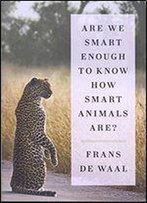
Photographic And Descriptive Musculoskeletal Atlas Of Bonobos
by Rui Diogo /
2017 / English / PDF, CHM
30.2 MB Download
Chimpanzees, including bonobos and common chimpanzees, are our closest living relatives. However, surprisingly, the information about the soft tissues of bonobos is very scarce, making it difficult to discuss and understand human evolution. This book, which is the first photographic and descriptive musculoskeletal atlas of bonobos (Pan paniscus), adopts the same format as the photographic atlases of other apes previously published by the same authors.
These books are part of a series of monographs that will set out the comparative and phylogenetic context of the gross anatomy and evolutionary history of the soft tissue morphology of modern humans and their closest relatives. The present atlas, which includes detailed high quality photographs of the musculoskeletal structures from most anatomical regions of the body as well as textual information about the attachments, innervation, function and weight of the respective muscles, is based on dissections of seven bonobos, including adults, adolescents, infants and fetuses, and males and females, and on an extensive review of the literature for comparisons with common chimpanzees. It therefore provides an updated review of the anatomical variations within chimpanzees as well as an extensive list of synonyms used in the literature to designate the structures covered here. Moreover, contrary to the previous photographic atlases of apes, it also provides details on neurovascular structures such as the brachial and lumbrosacral plexuses. The book will therefore be of interest to students, teachers and researchers focusing on primatology, comparative anatomy, functional morphology, zoology, and physical anthropology and to medical students, doctors and researchers who are curious about the origin, evolution, homology and variations of the musculoskeletal and neurovascular structures of modern humans.











